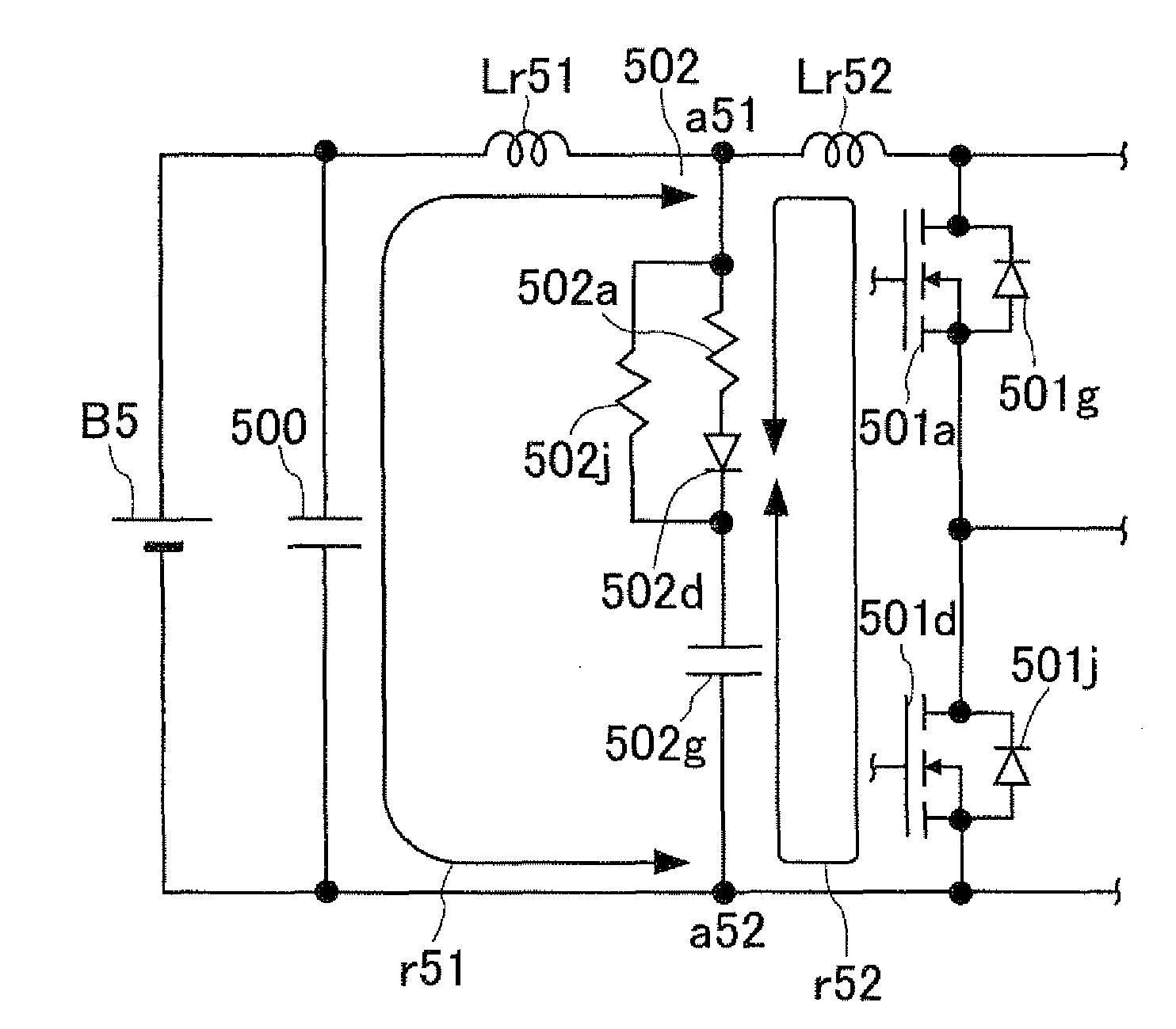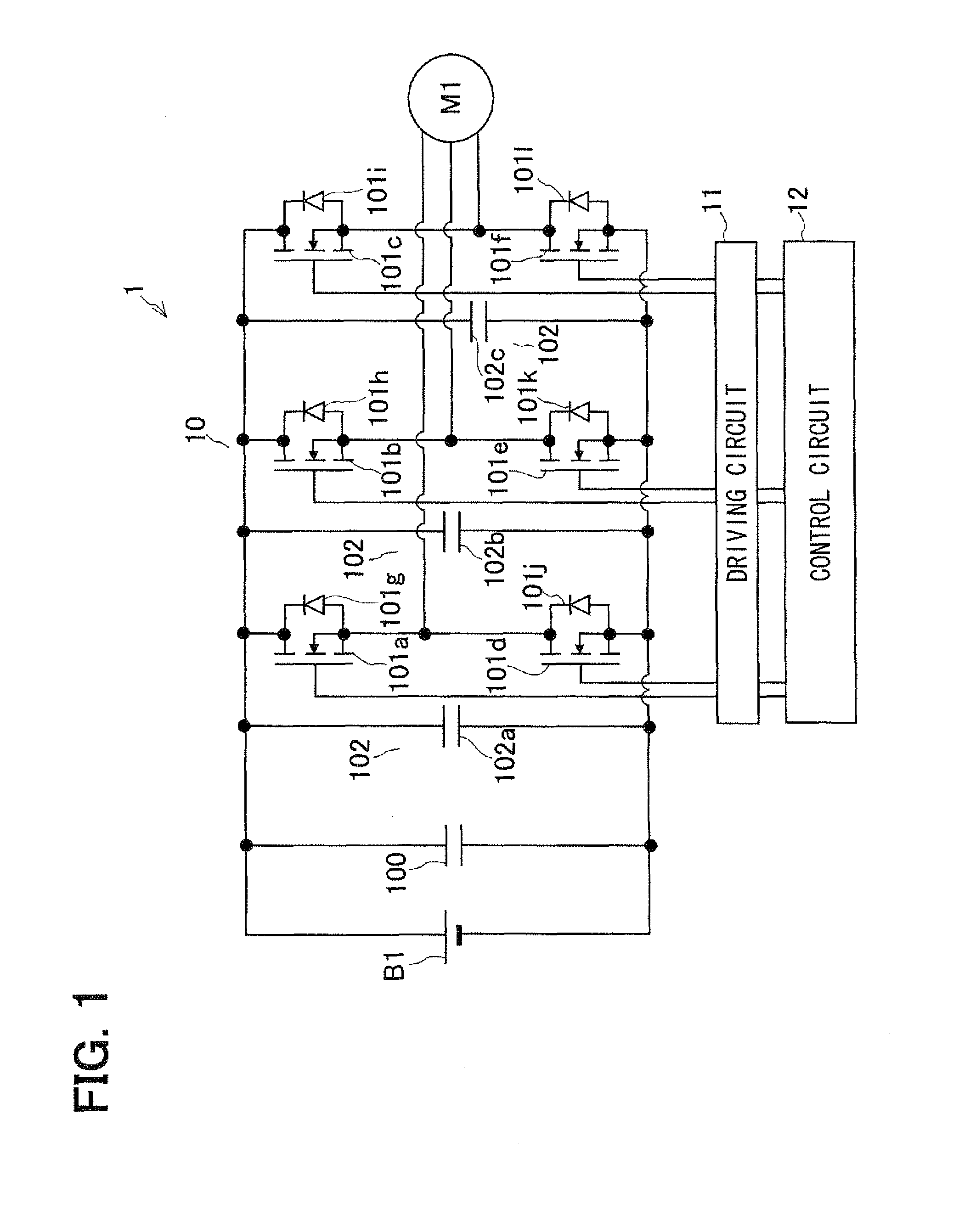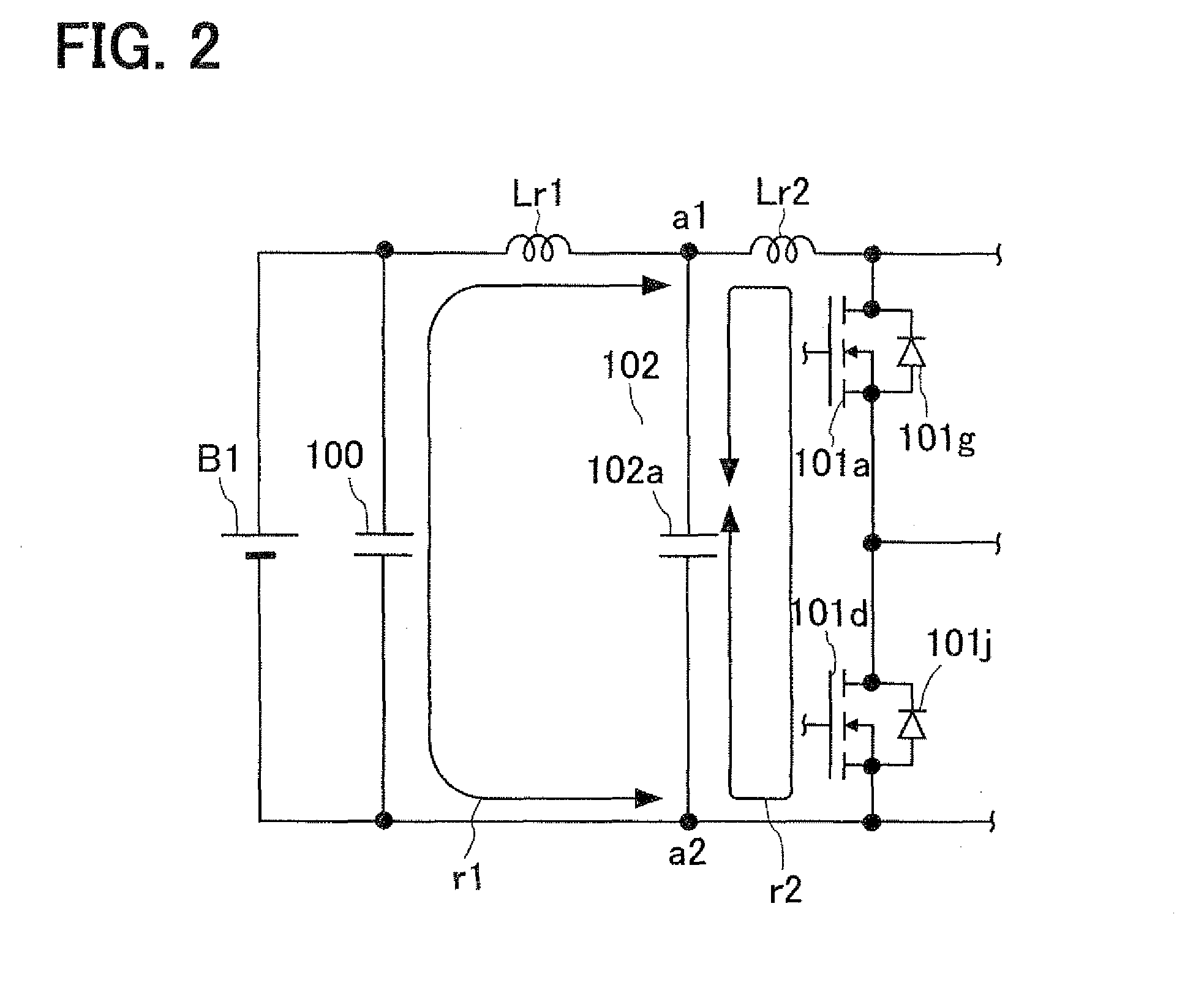Switching device
a technology of switching device and recovery current, which is applied in the direction of power conversion systems, electrical devices, and arrangements responsive to excess voltage, can solve the problems of limiting the power dissipation associated with recovery current, and achieve the effects of reducing surge voltage, simple configuration, and reducing power dissipation
- Summary
- Abstract
- Description
- Claims
- Application Information
AI Technical Summary
Benefits of technology
Problems solved by technology
Method used
Image
Examples
first embodiment
[0031]A switching device according to a first embodiment of the present invention can be suitably used for, for example, a motor control device disposed in a vehicle. A motor control device 1 according to the present embodiment will be described with reference to FIG. 1 and FIG. 2.
[0032]A three-phase alternating current (AC) motor M1 shown in FIG. 1 is disposed in a vehicle. The three-phase AC motor M1 generates driving force when three-phase AC voltage is supplied.
[0033]The motor control device 1 is disposed in a vehicle. The motor control device 1 can operate as a power converter. The motor control device 1 converts direct current (DC) voltage output from a battery 61 (direct current power source) into three-phase AC voltage and supplies the three-phase AC voltage to three-phase AC motor M1. In other words, the motor control device 1 converts DC power to AC power and supplies the AC power to the three-phase AC motor M1. The motor control device 1 includes an inverter circuit 10, a...
second embodiment
[0054]A motor control device 2 according to a second embodiment of the present invention will be described with reference to FIG. 6 and FIG. 7. In the motor control device 2, a configuration of a snubber circuit is different from the configuration of the snubber circuit 102 according to the first embodiment.
[0055]As shown in FIG. 6, the motor control device 2 includes an inverter circuit 20, a driving circuit 21, and a control circuit 22. The inverter circuit 20 can operate as a switching device. The driving circuit 21 and the control circuit 22 have configurations similar to the configurations of the driving circuit 11 and the control circuit 12 according to the first embodiment. The inverter circuit 20 is coupled with a battery B2 and a three-phase AC motor M2.
[0056]The inverter circuit 20 includes a smoothing capacitor 200, FETs 201a-201f, and a snubber circuit 202. The FETs 201a-201f can operate as semiconductor switching elements. The smoothing capacitor 200 has a configuration...
third embodiment
[0063]A motor control device 3 according to a third embodiment of the present invention will be described with reference to FIG. 9 and FIG. 10. In the motor control device 3, a configuration of a snubber circuit is different from the configuration of the snubber circuit 102 according to the first embodiment.
[0064]As shown in FIG. 9, the motor control device 3 includes an inverter circuit 30, a driving circuit 31, and a control circuit 32. The inverter circuit 30 can operate as a switching device. The driving circuit 31 and the control circuit 32 have configurations similar to the configurations of the driving circuit 11 and the control circuit 12 according to the first embodiment. The inverter circuit 30 is coupled with a battery B3 and a three-phase AC motor M3.
[0065]The inverter circuit 30 includes a smoothing capacitor 300, FETs 301a-301f, and a snubber circuit 302. The FETs 301a-301f can operate as semiconductor switching elements. The smoothing capacitor 300 has a configuration...
PUM
 Login to View More
Login to View More Abstract
Description
Claims
Application Information
 Login to View More
Login to View More - R&D
- Intellectual Property
- Life Sciences
- Materials
- Tech Scout
- Unparalleled Data Quality
- Higher Quality Content
- 60% Fewer Hallucinations
Browse by: Latest US Patents, China's latest patents, Technical Efficacy Thesaurus, Application Domain, Technology Topic, Popular Technical Reports.
© 2025 PatSnap. All rights reserved.Legal|Privacy policy|Modern Slavery Act Transparency Statement|Sitemap|About US| Contact US: help@patsnap.com



